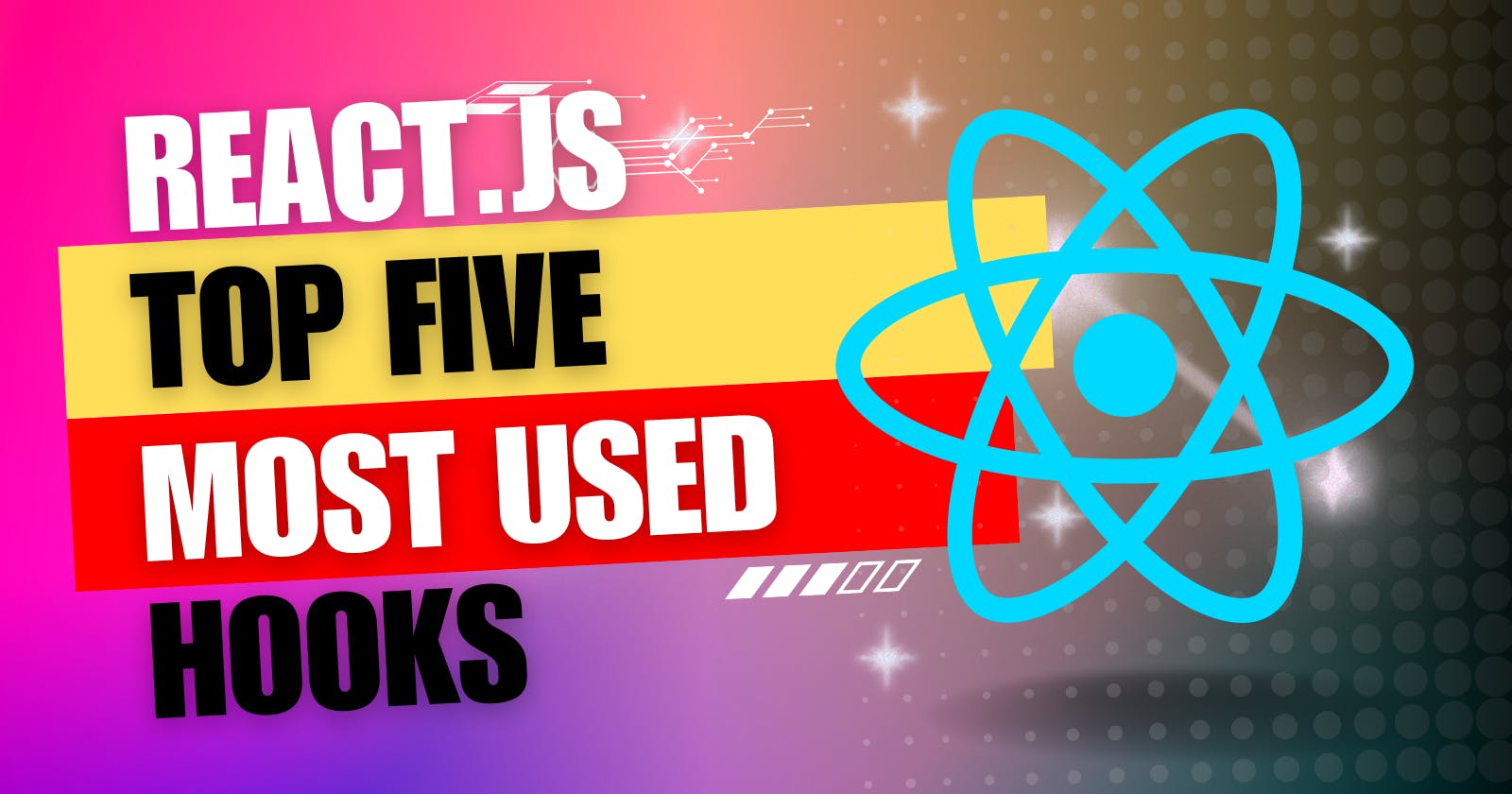Exploring the Top 5 Most Used React Hooks
Boost Your React Development: Mastering the Top 5 Essential React Hooks
Table of contents
The handling of stateful logic and side effects in React functional components by developers was completely transformed by React hooks. Since the start, they have developed into essential resources for modern React development. Of all the hooks available, a few have become essentials in nearly all React projects. Let's examine the features and applications of the top five most popular React hooks.
useState
UseState is definitely the most essential and frequently utilised React hook. It makes it possible for functional components to handle state, often doing away with the requirement for class components. Developers can declare and update state variables inside of functional components by using useState. Examine this simple example:
import React, { useState } from 'react';
function Counter() {
const [count, setCount] = useState(0);
return (
<div>
<p>Count: {count}</p>
<button onClick={() => setCount(count + 1)}>Increment</button>
</div>
);
}
useEffect
Functional components' side effects, like data fetching, subscriptions, and manual DOM modification, are managed by useEffect. It replaces the lifecycle methods in class components and executes after each render. UseEffect can be used in the following ways to fetch data:
import React, { useState, useEffect } from 'react';
function DataFetcher() {
const [data, setData] = useState(null);
useEffect(() => {
fetch('https://api.example.com/data')
.then(response => response.json())
.then(data => setData(data))
.catch(error => console.error('Error fetching data:', error));
}, []);
return (
<div>
{data ? (
<ul>
{data.map(item => (
<li key={item.id}>{item.name}</li>
))}
</ul>
) : (
<p>Loading...</p>
)}
</div>
);
}
useContext
useContext provides a way to consume context values created by React.createContext without nesting. It allows components to subscribe to a context and re-render whenever the context value changes. Here's a simple example:
import React, { useContext } from 'react';
const ThemeContext = React.createContext('light');
function ThemeComponent() {
const theme = useContext(ThemeContext);
return <p>Current theme: {theme}</p>;
}
useRef
useRef returns a mutable ref object whose .current property is initialized to the passed argument (initialValue). For the duration of the component's lifespan, the returned object will remain in place. This helps with a variety of tasks, like accessing DOM elements and maintaining modifiable values without triggering re-renders.
import React, { useRef } from 'react';
function TextInput() {
const inputRef = useRef();
const handleClick = () => {
inputRef.current.focus();
};
return (
<div>
<input ref={inputRef} type="text" />
<button onClick={handleClick}>Focus Input</button>
</div>
);
}
useCallback
A memoized callback function is returned by useCallback. In order to avoid unnecessary renderings, it's helpful to pass callbacks to optimized child components that depend on reference equality. It remembers the function between renders, so it's particularly helpful for optimizing performance.
import React, { useState, useCallback } from 'react';
function MemoizedComponent() {
const [count, setCount] = useState(0);
const handleClick = useCallback(() => {
setCount(count + 1);
}, [count]);
return (
<div>
<p>Count: {count}</p>
<button onClick={handleClick}>Increment</button>
</div>
);
}
Conclusion
To sum up, React hooks have greatly simplified the React application development process. These are the top five React hooks that are most frequently used, but there are many more that have different uses. Gaining proficiency with these hooks will significantly improve the performance and efficiency of your React projects.
